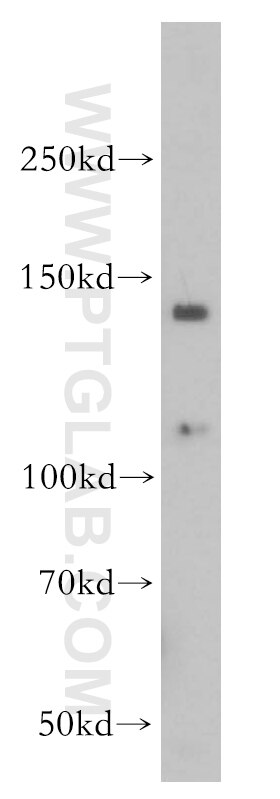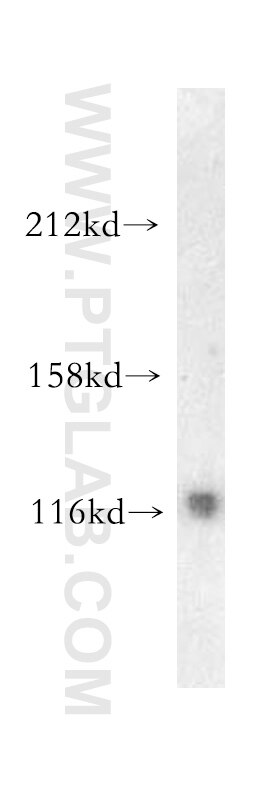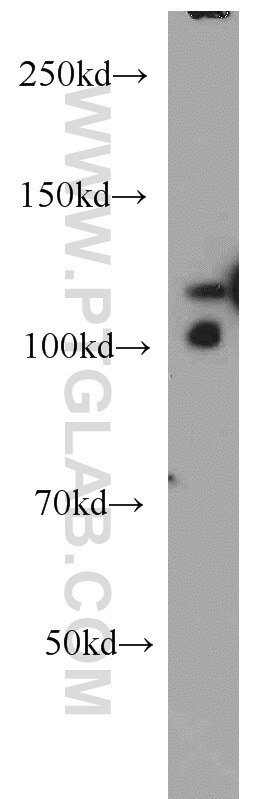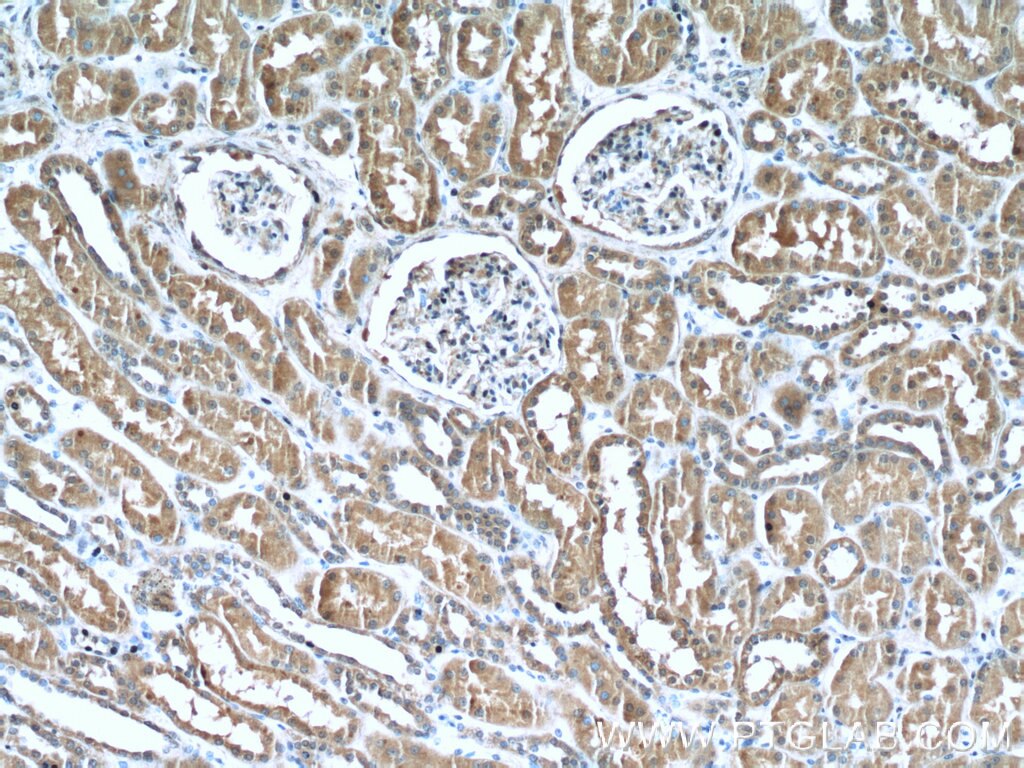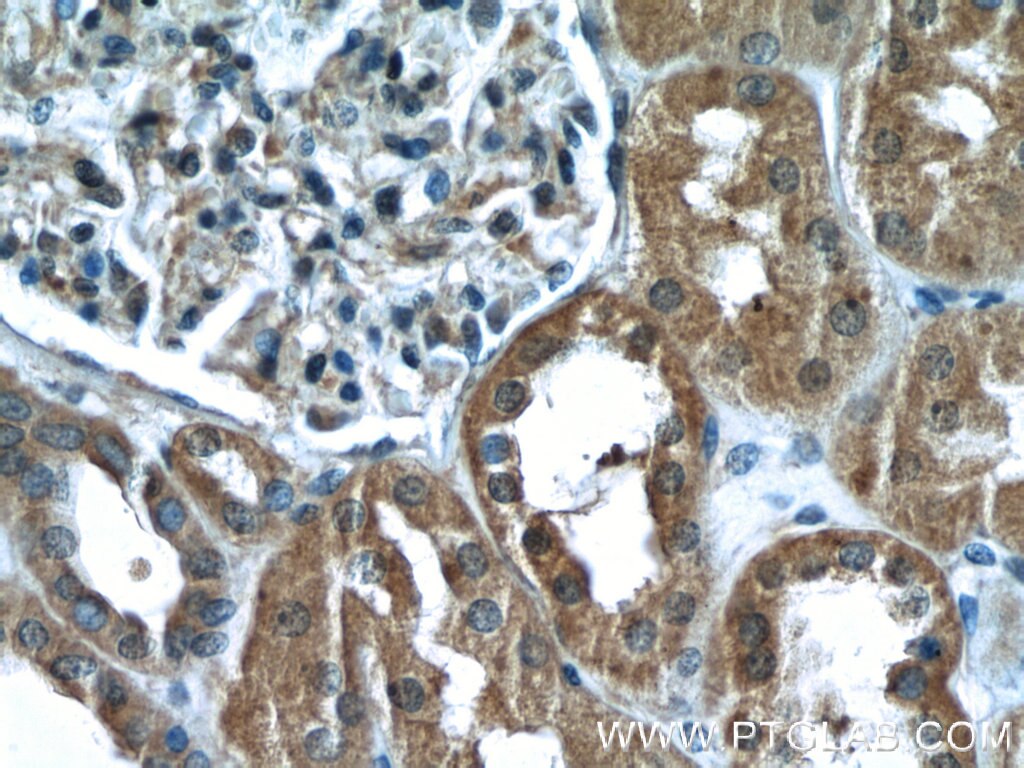PYK2 Polyklonaler Antikörper
PYK2 Polyklonal Antikörper für WB, IHC, ELISA
Wirt / Isotyp
Kaninchen / IgG
Getestete Reaktivität
human, Maus und mehr (1)
Anwendung
WB, IHC, ELISA
Konjugation
Unkonjugiert
Kat-Nr. : 10044-2-AP
Synonyme
Geprüfte Anwendungen
| Erfolgreiche Detektion in WB | Maushirngewebe, Jurkat-Zellen |
| Erfolgreiche Detektion in IHC | humanes Medulloblastom-Gewebe, humanes Nierengewebe Hinweis: Antigendemaskierung mit TE-Puffer pH 9,0 empfohlen. (*) Wahlweise kann die Antigendemaskierung auch mit Citratpuffer pH 6,0 erfolgen. |
Empfohlene Verdünnung
| Anwendung | Verdünnung |
|---|---|
| Western Blot (WB) | WB : 1:500-1:1000 |
| Immunhistochemie (IHC) | IHC : 1:20-1:200 |
| It is recommended that this reagent should be titrated in each testing system to obtain optimal results. | |
| Sample-dependent, check data in validation data gallery | |
Veröffentlichte Anwendungen
| WB | See 1 publications below |
Produktinformation
10044-2-AP bindet in WB, IHC, ELISA PYK2 und zeigt Reaktivität mit human, Maus
| Getestete Reaktivität | human, Maus |
| In Publikationen genannte Reaktivität | Ratte |
| Wirt / Isotyp | Kaninchen / IgG |
| Klonalität | Polyklonal |
| Typ | Antikörper |
| Immunogen | PYK2 fusion protein Ag0002 |
| Vollständiger Name | PTK2B protein tyrosine kinase 2 beta |
| Berechnetes Molekulargewicht | 120 kDa |
| Beobachtetes Molekulargewicht | 116 kDa |
| GenBank-Zugangsnummer | BC036651 |
| Gene symbol | PTK2B |
| Gene ID (NCBI) | 2185 |
| Konjugation | Unkonjugiert |
| Form | Liquid |
| Reinigungsmethode | Antigen-Affinitätsreinigung |
| Lagerungspuffer | PBS with 0.02% sodium azide and 50% glycerol |
| Lagerungsbedingungen | Bei -20°C lagern. Nach dem Versand ein Jahr lang stabil Aliquotieren ist bei -20oC Lagerung nicht notwendig. 20ul Größen enthalten 0,1% BSA. |
Hintergrundinformationen
Proline-rich tyrosine kinase 2 (Pyk2; also known as CAK, RAFTK and CADTK) is a cytoplasmic tyrosine kinase implicated to play a role in several introcellular signaling pathways. It is expressed in many cells and tissues and migrated as a 130 kDa band in Western Blotting analysis.

